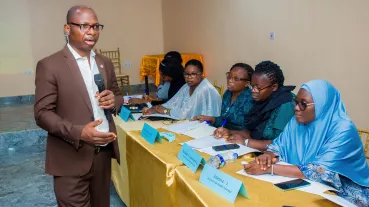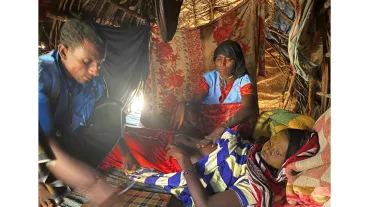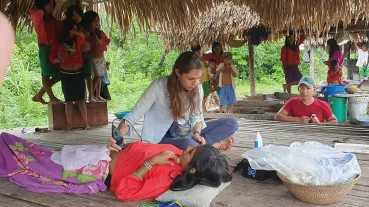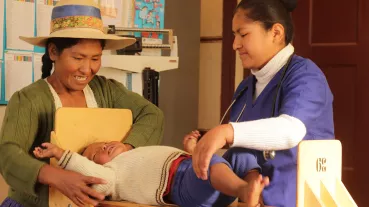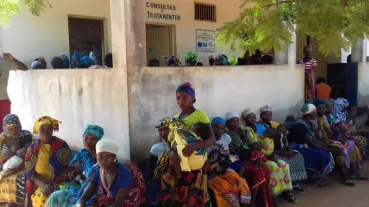Integrated Community Based Health Project
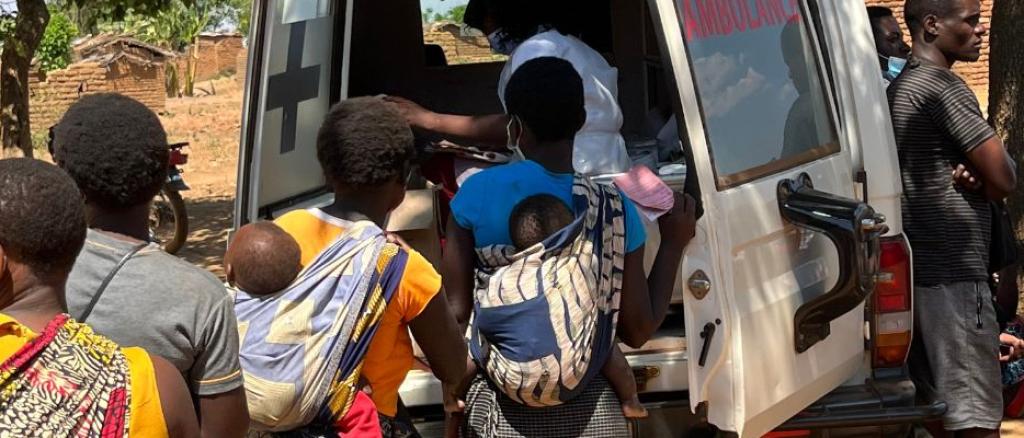
Situation:
Malawi Malawi remains one of the poorest countries in the world, ranking 174 out of 189 countries on the UNDP Human Development Index (UNDP Human Development Report 2020). In 2019, Malawi's HDI was 0.483. The economy is predominantly agro-based, with agriculture, forestry, and fisheries accounting for 28% of GDP. The health status in Malawi is gradually improving, although many indicators still show deficits. Over 50% of the population live below the poverty line and the under-five mortality rate is 68 per 1000 live births (Malawi Health Sector Strategic Plan (HSSP) 2017-2022). The main reasons for the high mortality rate across the country are HIV, respiratory infections, and malaria. AIDS remains the leading cause of death in Malawi and HIV prevalence remains high with an estimated 50,000 new infections per year. HIV prevalence among women and men aged 15-49 years is 8.8% (MDHS 2016). The national HIV incidence for women and men aged 15-49 years is 0.32 %. Lower respiratory tract infections (LRTI) are the second leading cause of death, according to the World Health Organization. Malaria is endemic throughout Malawi and is the leading cause of morbidity and mortality in children under five and pregnant women. Malaria accounts for more than 30 % of outpatient health visits.
As in most low-income countries, non-communicable diseases (NCDs) are becoming a major problem in Malawi, representing a significant burden of disease in rural areas. According to the WHO country report, 32% of deaths in Malawi in the 25-64 age group are due to cardiovascular diseases such as heart failure. In addition, diarrheal diseases are a major burden, especially in rural communities with poor access to safe water. Annually, adolescent pregnancies account for 25% of all pregnancies. ("Global Burden of Disease", 2013).
Objective:
Improving the health status of communities in 3 TAs in Dowa District through access to health and WASH services by 2024.
- At the end of the project, approximately 80% of the children between 6 and 59 months of age are examined monthly with regard to their nutritional status and their caregivers are advised.
- 80% of households receive medical assistance through mobile clinics.
- 15,288 household with pregnant and lactating women (PLW) and children under five prepare their food according to the 6-food mix at the end of the project.
Health and nutrition:
- Conduct education campaigns regarding communicable and non-communicable diseases.
- Conduct integrated mobile clinics to provide basic health services.
- Promote child health: Vitamin A supplementation and deworming of children 6-59 months of age and identification and follow-up of malnourished children.
- Training for members of care groups and health care workers in the management of mild acute malnutrition (MAM)
WASH:
- Establishment/reactivation of 7 Water Point Committees, briefing on role and skills.
- Drilling of 4 boreholes
- Rehabilitation of 3 boreholes
- Promotion of sanitation and hygiene in households through behavioral changes
Strengthening local capacities:
- Support local campaigns on global days of action on health and WASH to raise awareness on specific issues
- Support and participate in technical working groups (TWGs) on health, nutrition, and WASH, as well as cluster and coordination meetings
- Procurement vehicle and other equipment
Malawi Red Cross places a strong emphasis on building and strengthening existing partnerships with relevant authorities and ministries at national, district, and community levels, intending to strengthen ownership and promote continuity of initiatives beyond the project period. In addition, the MRCS uses its extensive local network of volunteers to promote the transfer of knowledge to the beneficiaries and to achieve a sustainable impact beyond the end of the project. For this purpose, targeted use is made of existing structures (HSAs, community health volunteers, and volunteers), which are maintained even after the end of the project. To this end, the MRCS is strengthening cooperation with key stakeholders at all levels as well as coordination mechanisms and building the capacity of health workers in the target communities and the MRCS team (incl. volunteers).
To ensure the sustainability of the structures created under the project such as the boreholes, mobile clinics, and sanitation in schools, the MRCS will sign agreements with the stakeholders at the beginning of the project. This will ensure that the target institutions such as schools for latrines, Water Point Committees for drilled and rehabilitated boreholes, and the Health Authority and Health Centres for the delivery of health services will be responsible. These agreements will also define the responsibilities of these stakeholders and the MRCS during project implementation and after project phasing out. The MRCS district structure will support the volunteers in continuing the activities after the project.
Specifically, MRCS will sign a so-called MoU with the District Health Office in Dowa at the beginning of the project. In this MoU, the roles and tasks of the individual partners will be defined and a sustainability strategy will be developed that describes which activities will be continued by the DHO and other actors after the end of the project. Experiences from other projects and districts in Malawi show that e.g. the mobile clinics are supported and continued after the end of the funding (to the extent of the available resources of the authority). Similar agreements are made with other authorities and stakeholders. This includes the communities and schools, which promise in an MoU to maintain the structures created, such as the boreholes and latrines, and to maintain them after the end of the project.
We strengthen local communities by building a volunteer network in remote villages. Volunteers are trained in health and first aid measures and in prevention, detection and treatment of malnutrition, and empowered to provide health services in the communities. The aim is to improve health care in remote regions in a long-term and sustainable way.
